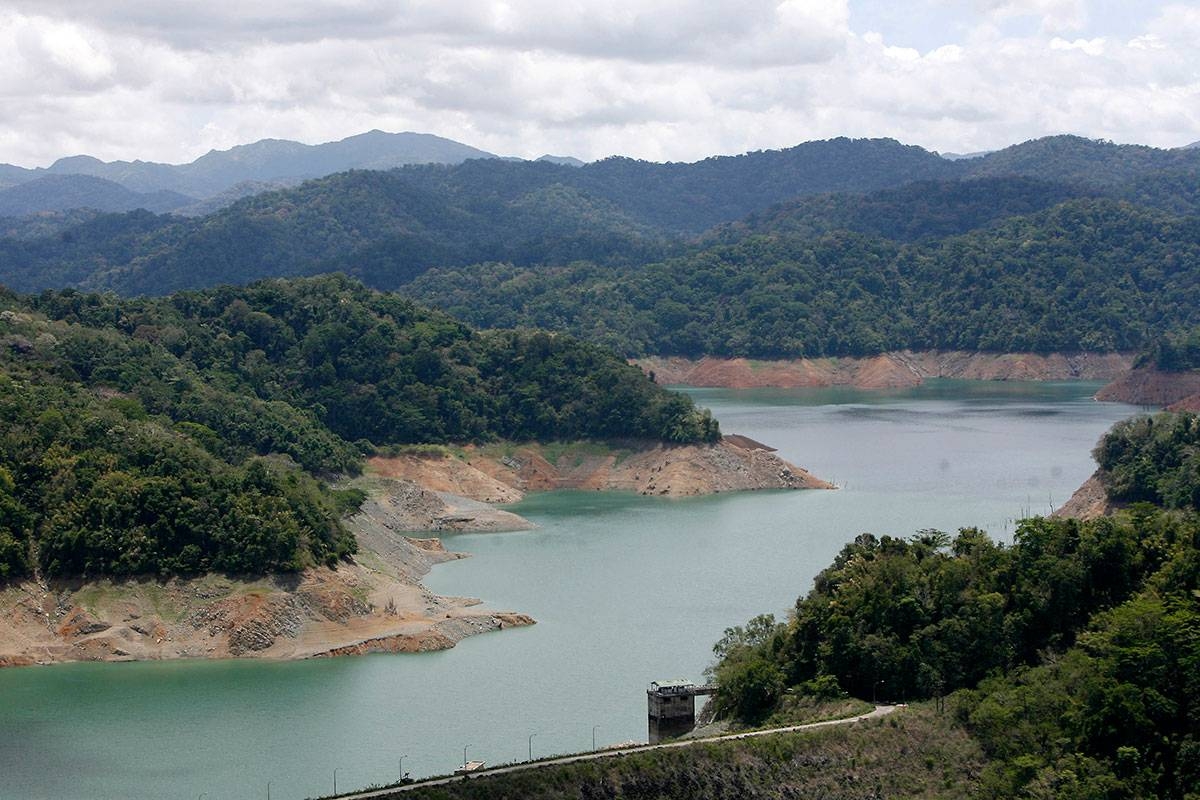
THE government on Tuesday urged the public — especially Metro Manila residents — to conserve water as dam levels continue to drop due to the impact of the El Niño phenomenon and the dry season.
El Niño Task Force spokesman, Presidential Communications Assistant Secretary Joey Villarama, said that while Metro Manila was not yet experiencing a water crisis, the water level of Angat Dam, which supplies more than 90 percent of Metro Manila's potable water needs, could drop further because of increased consumption, lack of rainfall and evaporation due to the heat.
"For now, we don't see that there will be a problem or that the Angat Dam will drop below the critical level of 180 meters, but as the temperature gets warmer, the household consumption increases, and of course, if we factor in the evaporation and lack of rainfall, there is a possibility that it will decrease," Villarama told reporters.
He assured the public that contingency measures were in place to ensure that there would be no water interruption.
In Metro Manila and Rizal, Villarama said, there were 137 deep wells alongside other treatment plants that could serve as alternative sources of water.
Of the total, 69 are on standby, and 10 are already operational for the water concessionaires Maynilad and Manila Water, he said.
Villarama said the Metropolitan Waterworks and Sewerage System would also decrease the water pressure of concessionaires in Metro Manila as a step to manage water consumption.
The National Water Resources Board has released advisories for water conservation to public pools in subdivisions, condominiums and other household settings, Villarama said.
The government is working on the construction and improvement of several multipurpose dams as part of the long-term plans for water supply and flood management, he added.
According to the National Irrigation Authority, Angat Dam supplies raw water to the majority of Metro Manila areas and irrigates about 28,000 hectares of farmland in the provinces of Bulacan and Pampanga.
The Philippine Atmospheric, Geophysical and Astronomical Services Administration (Pagasa) on Monday said Angat Dam's water level was down by 9.20 meters from the previous day's 199.23 meters.
The figure was 12.97 below Angat's normal high water level of 212 meters but still 19.23 above its minimum operating level of 180 meters.
Aside from Angat, other Luzon dams also experiencing decreasing water levels are Ambuklao in Benguet, San Roque in Pangasinan and Pantabangan in Nueva Ecija.
Pantabangan supplies the irrigation needs of Nueva Ecija, the largest rice producer in Central Luzon.
Villarama said there was no need to declare a state of calamity in Metro Manila despite the prevailing dry spell.
Cebu City this week declared a water crisis, while Zamboanga City declared a state of calamity in March due to the water shortage caused by the El Niño phenomenon.
"We have not reached critical levels, and as I said, there are contingency measures, and we should factor in that in the following weeks; Pagasa is forecasting some rain," Villarama said.
"We hope that even with this little rain, the water level of Angat Dam will be filled somehow, and its level will not reach the critical level," he added.
Pagasa had forecast the extreme climate phenomenon to peak in February, with its effects possibly felt until June.
To date, 80 provinces have been affected by the El Niño, with 16 under a state of calamity.
Villarama said that Occidental Mindoro is the most affected as it has declared a state of calamity for the entire province.
Western Visayas (Region 6) is also being affected, while Iloilo and Capiz have declared a suspension of classes for April 1 and 2 due to "high heat conditions."
Citing the March 25 data, Villarama said that El Niño's damage to the agricultural sector has reached P1.75 billion.
This translates to roughly 32,231 hectares of farmlands that have been affected, although he said that 79 percent of the area "has a chance to be salvaged or recovered."
In January, President Ferdinand Marcos Jr. signed Executive Order 53 to streamline, reactivate, and reconstitute the old El Niño task forces under EO 16 (s. 2001) and Memorandum Order 38 (s. 2019).
Under the EO, the President instructed the task force to secure a comprehensive disaster preparedness and rehabilitation plan and ensure "systematic, holistic, and results-driven interventions" to aid the Filipinos and alleviate the devastating effects of disasters.
Read The Rest at :








